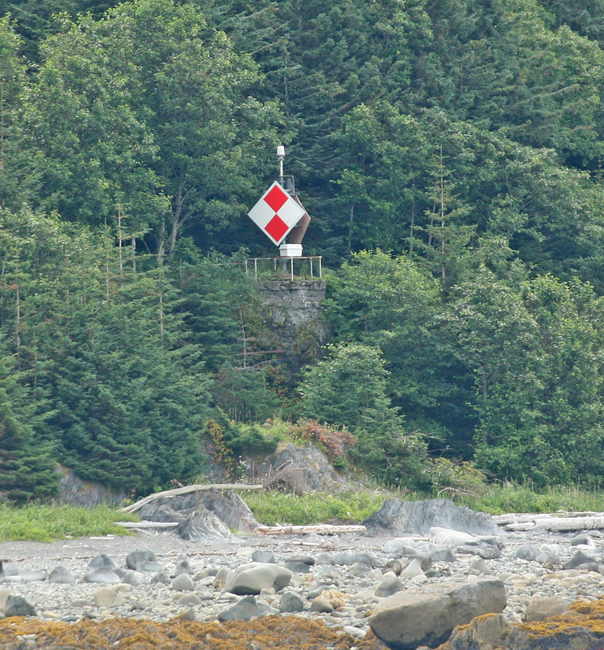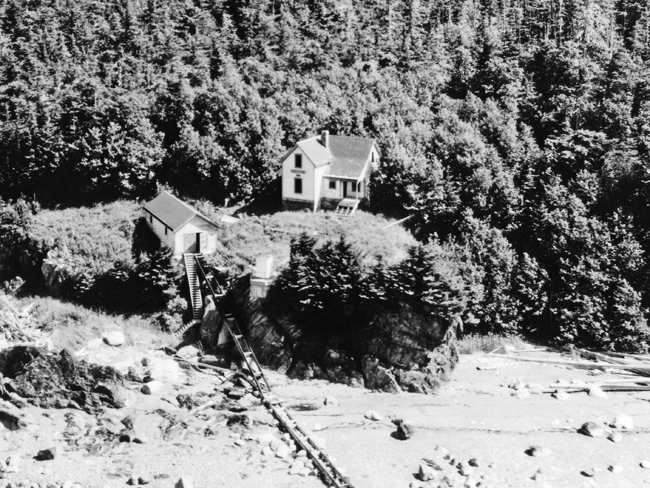Point Sherman Lighthouse
Point Sherman Light Station was constructed during the summer of 1904 using hired labor and was first lit on October 18 of that year, making it the eleventh lighthouse built by the United States in Alaska.

Point Sherman History
Captain Richard W. Meade, a graduate of the U.S. Naval Academy, served as a Union commander in the Civil War, and then in 1868, was placed in charge of the U.S.S. Saginaw and sent to the recently acquired Alaskan Territory. While sailing along Lynn Canal, Meade named a point of land on the east side of the canal, situated roughly midway between Juneau and Skagway, Point Sherman, after the Civil War Union General William Techumseh Sherman.
The light was similar to ones constructed on Fairway Island and Point Retreat and was displayed from a black hexagonal lantern room situated atop a white, hexagonal tower, six feet in height. A one-and-one-half story keeper’s dwelling and a boathouse were located just east of the light.
In 1932, the station was transferred to the Forest Service and replaced by a nearby buoy. A dayboard and a light were placed on the site of the original light in 1981.

At Point Sherman
About Us
Lighthouses are a beacon. Properly used, they’re a beacon of hope to ward off impending danger, yet protecting from and warning of danger is exactly what they’re for.
The earliest lighthouses go back to biblical times, all with a mission to protect mariners. Navigating boats & ships safely means that aids to navigation had to be used to warn of the rocks & shoals, the sudden changes of seascape, and other hazards that prevented safe passage.
The lighthouses of Alaska, which you’ll find in this site, are testament to the challenges of marine navigation, life along the coast of Alaska, and the inherent dangers that can swell up and crush a concrete structure in moments, witness Scotch Gap. Yet for the many lives that have been lost, the lives saved because of these amazing aids to navigation can barely be quantified. We hope you enjoy our site.
Alaska History is Waiting


